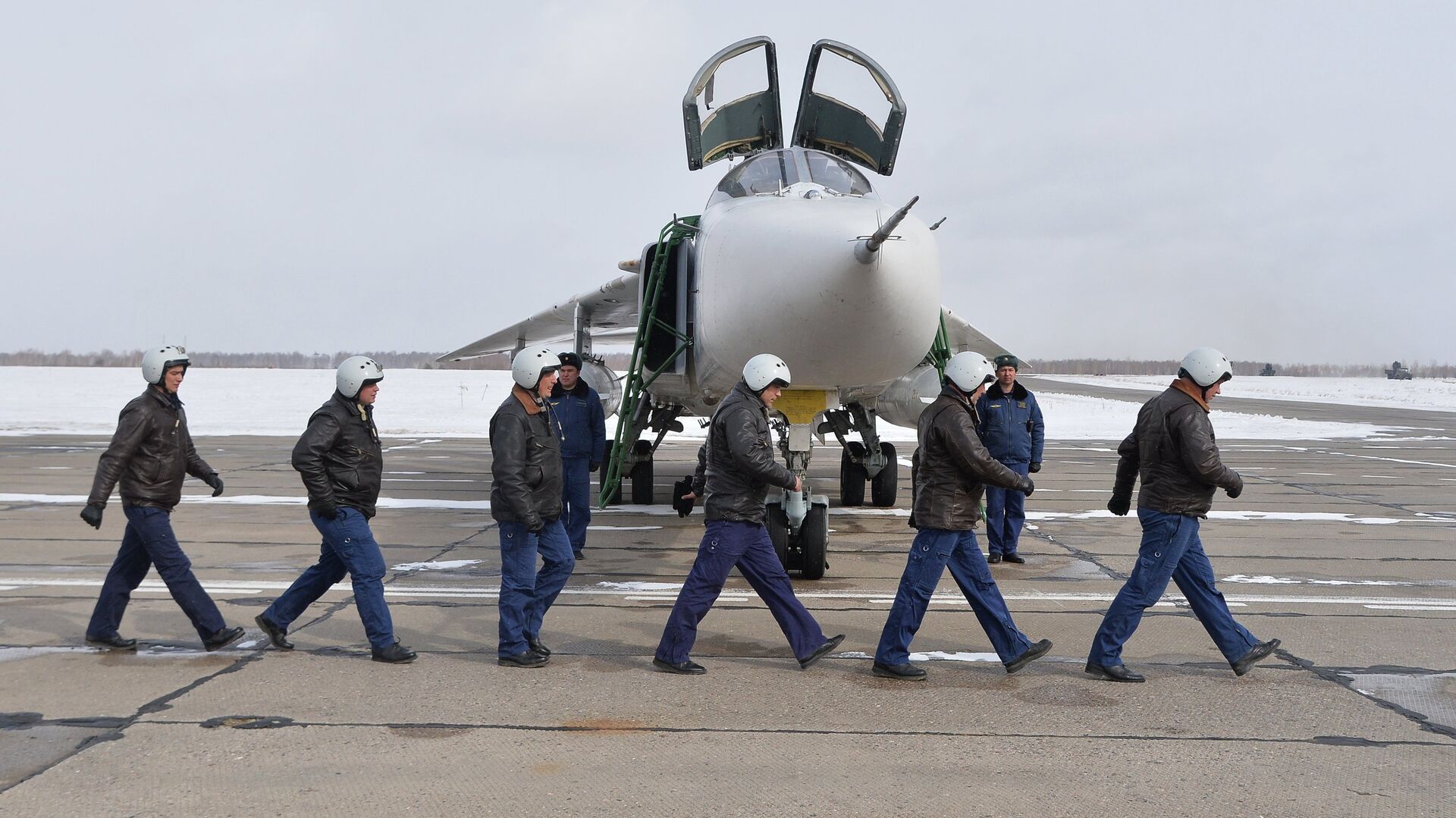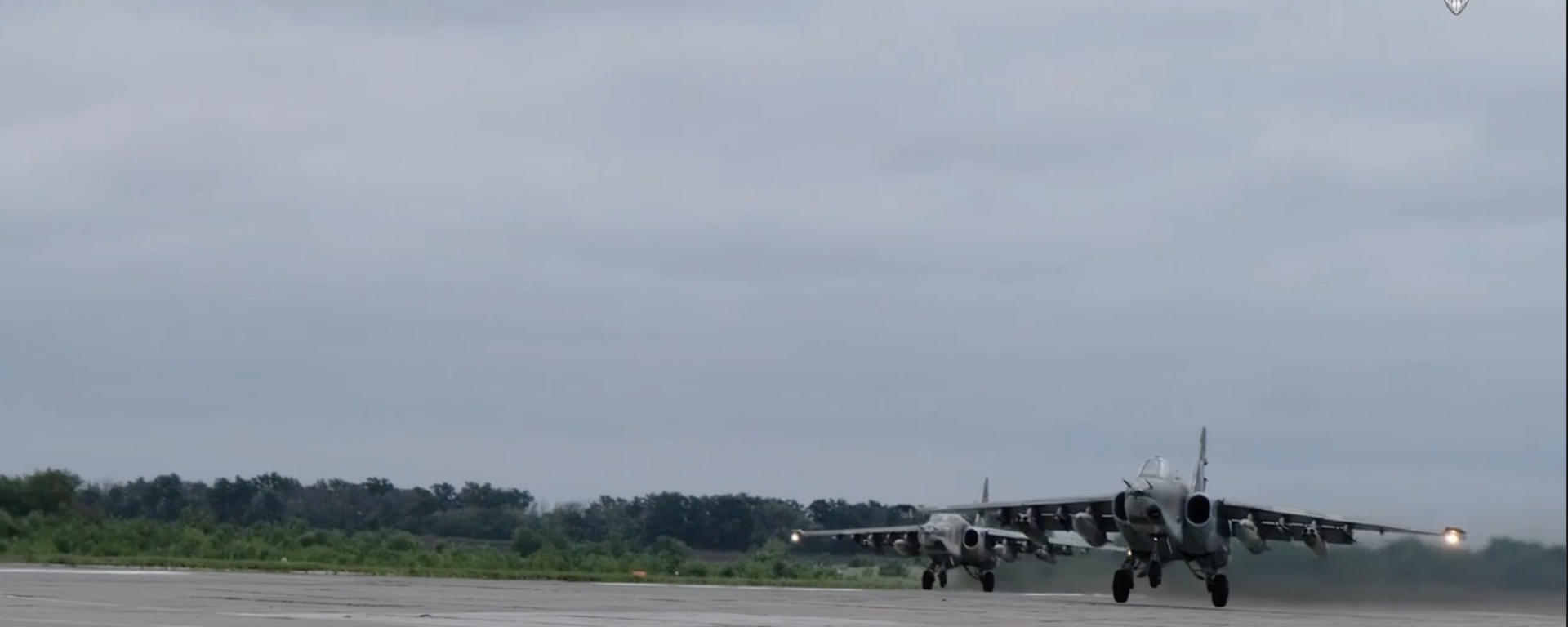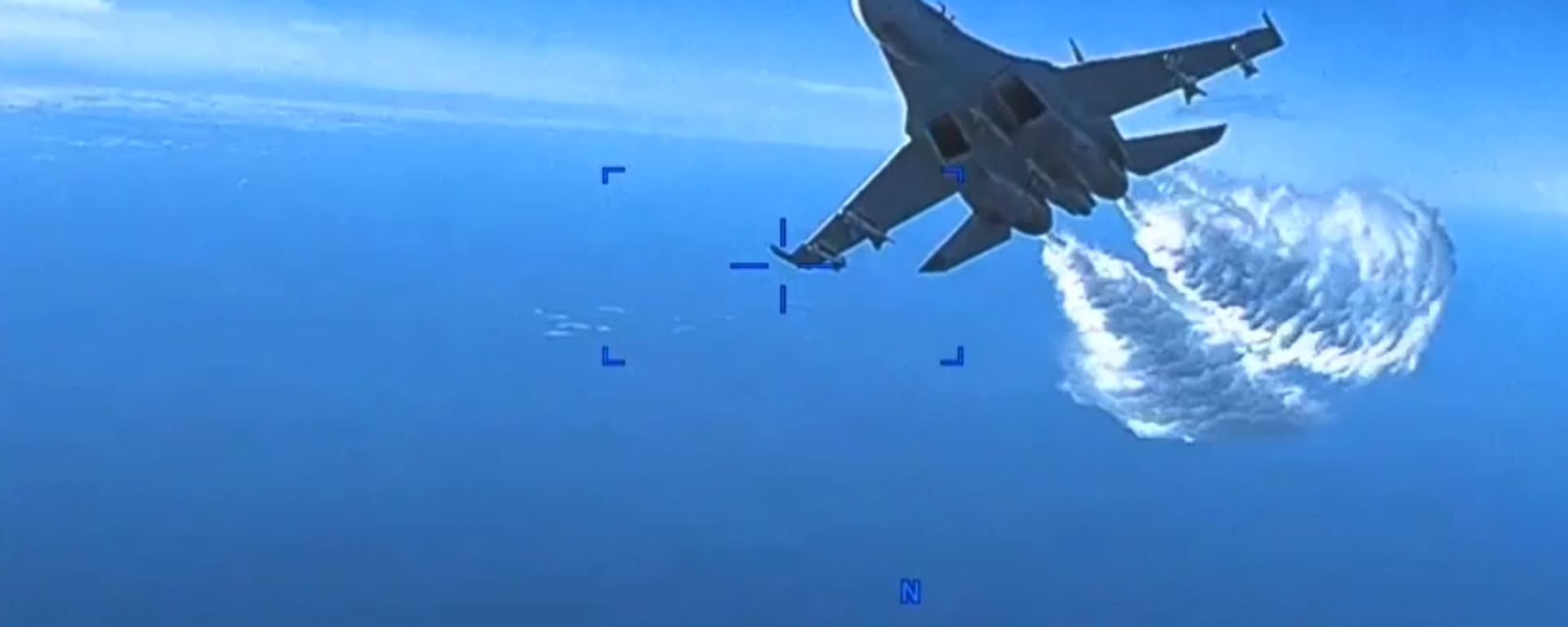https://sputnikglobe.com/20230812/us-got-rude-awakening-in-ukraine-after-downplaying-russian-air-power---ex-pentagon-analyst-1112544523.html
Ex-Pentagon Analyst: US Got Rude Awakening in Ukraine After Downplaying Russian Air Power
Ex-Pentagon Analyst: US Got Rude Awakening in Ukraine After Downplaying Russian Air Power
Sputnik International
August 12 is Russian Aerospace Forces Day. In light of the critical role played by Russian air power in the military operations in Ukraine, Sputnik decided to... 12.08.2023, Sputnik International
2023-08-12T13:00+0000
2023-08-12T13:00+0000
2023-08-12T17:27+0000
military
karen kwiatkowski
ukraine
russia
nato
pentagon
russian aerospace forces
air force
https://cdn1.img.sputnikglobe.com/img/103652/56/1036525606_0:177:3012:1871_1920x0_80_0_0_e6ec5e20ca4000051dcd5bcbfe65610c.jpg
Saturday marks the 111th anniversary of the August 12, 1912 order establishing the Imperial Russian Air Service as a separate branch of the armed forces. In the century-plus since, Russia’s air forces have faced multiple reorganizations, and been known by multiple names, from the Soviet Air Forces (1918-1991) to the Russian Air Force (1992) and finally the Russian Aerospace Forces (2015 on). But throughout, its mission remained the same – to defend the nation’s airspace and provide ground support for the Army.From the very beginning of the escalation of the Donbass crisis into a full-blown Russia-NATO proxy war in Ukraine in February 2022, the Aerospace Forces have played a key role in Russian offensive and defensive operations.Its role has become especially noticeable amid Ukraine’s two-month old counteroffensive attempt, which US and NATO officials and generals now openly agree seems “extremely unlikely” to succeed, as Ukrainian forces have failed to break through even a single major Russian defensive line while taking staggering losses in troops and equipment.Russia’s overwhelming superiority in the air has played a decisive role in halting Ukraine’s offensive operations, striking whenever they attempt a major armored maneuver, and keeping an eye out for movements in coordination with satellite intelligence and reconnaissance drones. So intense has the devastation of Ukrainian forces been that panicky NATO and Ukrainian officials have begun to blame one another over “tactics” or the lack of equipment and ammo instead of asking questions about the reasonableness of pushing Ukrainian troops to attack entrenched Russian positions without air cover or artillery superiority.Rude AwakeningThe Russian Aerospace Forces' performance in Ukraine "has probably surprised many in the West," says retired US Air Force veteran, former Pentagon analyst, anti-war whistleblower and activist Karen Kwiatkowski, "in part because of Western assumptions.""I suspect also that how the Russian Air Force uses these systems in battle is also a surprise for the West, and particularly the US. Obviously, the Ukraine battlefield has been a testing ground for high-tech and rapidly adapting drone warfare, even as in some ways it reminds of a slogging land war in Europe faced in World War I," she said.Characterizing the Russian Aerospace Forces as a true "national defense air force," as opposed to the "offensive, forward-operating Air Force" which the US has, Kwiatkowski said that Russian air power seems geared toward supporting land and sea operations "in a tightly integrated way" with "focus and exceptional skill set for ground support." This is as opposed to the US and NATO powers, "where air forces seek to ‘dominate the skies’ in a somewhat competitive way with the separate Army and Navy missions," she said.Kwiatkowski highlighted the Lancet drone in particular, which is used by the Ground Forces, as a major "game changer" in Ukraine, given its success in devastating even the latest NATO ground-to-air weapons and Leopard tanks."The Lancet represents the evolution of Russian drone technology and design. It can carry different munitions, and serve different purposes on and above the battlefield, and appears to be cost effective to produce. It really represents what rapid evolution and development in a weapon, using real world data and learning, can produce," the former Pentagon analyst said.Unconventional Times Call for Unconventional TacticsAlong with strategy and weapons, Kwiatkowski also pointed to the surprising and "non-traditional, almost experimental" aerial disruption tactics employed by Russian military pilots in recent months, including against US-operated reconnaissance drones over the Black Sea and in Syria, by making close approaches and dumping fuel on them, or conducting other unpredictable aerial maneuvers.
https://sputnikglobe.com/20230804/watch-russian-su-25-aircraft-destroy-ukrainian-mortar-units--1112384746.html
https://sputnikglobe.com/20230809/su-57-edges-out-f-35-to-emerge-sentinel-of-skies-1112468913.html
https://sputnikglobe.com/20230317/dont-fear-the-reaper-how-can-heavy-drones-be-detected-identified-and-brought-down-1108508647.html
ukraine
russia
Sputnik International
feedback@sputniknews.com
+74956456601
MIA „Rossiya Segodnya“
2023
News
en_EN
Sputnik International
feedback@sputniknews.com
+74956456601
MIA „Rossiya Segodnya“
Sputnik International
feedback@sputniknews.com
+74956456601
MIA „Rossiya Segodnya“
russian aerospace forces, holiday, anniversary, karen kwiatkowski, us air force, analysis, ukraine, nato, united states, tactics, strategy, pilots
russian aerospace forces, holiday, anniversary, karen kwiatkowski, us air force, analysis, ukraine, nato, united states, tactics, strategy, pilots
Ex-Pentagon Analyst: US Got Rude Awakening in Ukraine After Downplaying Russian Air Power
13:00 GMT 12.08.2023 (Updated: 17:27 GMT 12.08.2023) August 12 is Russian Aerospace Forces Day. In light of the critical role played by Russian air power in the military operations in Ukraine, Sputnik decided to reach out to retired US Air Force Lieutenant Colonel Karen Kwiatkowski for her take on the conflict, and what the Pentagon got dead wrong in its assessment of Russian capabilities.
Saturday marks the 111th anniversary of the August 12, 1912 order establishing the Imperial Russian Air Service as a separate branch of the armed forces. In the century-plus since, Russia’s air forces have faced multiple reorganizations, and been known by multiple names, from the Soviet Air Forces (1918-1991) to the Russian Air Force (1992) and finally the Russian Aerospace Forces (2015 on). But throughout, its mission remained the same – to defend the nation’s airspace and provide ground support for the Army.
From the very beginning of the escalation of the Donbass crisis into a full-blown Russia-NATO proxy war in Ukraine in February 2022, the Aerospace Forces have played a key role in Russian offensive and defensive operations.
Its role has become especially noticeable amid Ukraine’s two-month old counteroffensive attempt, which US and NATO officials and generals now openly agree seems
“extremely unlikely” to succeed, as Ukrainian forces have failed to break through even a single major Russian defensive line while taking
staggering losses in troops and equipment.
Russia’s overwhelming superiority in the air has played a decisive role in halting Ukraine’s offensive operations, striking whenever they attempt a major armored maneuver, and keeping an eye out for movements in coordination with satellite intelligence and reconnaissance drones. So intense has the devastation of Ukrainian forces been that panicky NATO and Ukrainian officials have begun to blame one another over
“tactics” or the
lack of equipment and ammo instead of asking questions about the reasonableness of pushing Ukrainian troops to attack entrenched Russian positions without air cover or artillery superiority.
The Russian Aerospace Forces' performance in Ukraine "has probably surprised many in the West," says retired US Air Force veteran, former Pentagon analyst, anti-war whistleblower and activist Karen Kwiatkowski, "in part because of Western assumptions."
"I think that the level of advanced technology in…the current Russian Air Force, and the relative newness of many of these systems compared to what we have in the West, has been a surprise, in part because Western analysis of intelligence is geared to downplay Russia and Russian capability in all ways. The Russophobia, and also a certain contempt for Russia, in DC and inside the Pentagon is a factor," Kwiatkowski told Sputnik.
"I suspect also that how the Russian Air Force uses these systems in battle is also a surprise for the West, and particularly the US. Obviously, the Ukraine battlefield has been a testing ground for high-tech and rapidly adapting drone warfare, even as in some ways it reminds of a slogging land war in Europe faced in World War I," she said.
Characterizing the Russian Aerospace Forces as a true "national defense air force," as opposed to the "offensive, forward-operating Air Force" which the US has, Kwiatkowski said that Russian air power seems geared toward supporting land and sea operations "in a tightly integrated way" with "focus and exceptional skill set for ground support." This is as opposed to the US and NATO powers, "where air forces seek to ‘dominate the skies’ in a somewhat competitive way with the separate Army and Navy missions," she said.
"For us in the West, it remains difficult to get accurate assessments of battlefield performance in Ukraine, and that deficiency of hard data impacts not just commentators and technicians, but our top Pentagon and national political leadership," Kwiatkowski stressed, after being asked to assess the performance of Russian Aerospace Force assets in Ukraine. "That said, it seems to me that the US media is somewhat hysterical over Russian drones, attack helicopters like the modern and capable Ka-52, and the Su-27 fighters in their various battlefield and defensive roles," indicating their effectiveness.
Kwiatkowski highlighted the Lancet drone in particular, which is used by the Ground Forces, as a major "game changer" in Ukraine, given its success in devastating even the latest NATO ground-to-air weapons and Leopard tanks.
"The Lancet represents the evolution of Russian drone technology and design. It can carry different munitions, and serve different purposes on and above the battlefield, and appears to be cost effective to produce. It really represents what rapid evolution and development in a weapon, using real world data and learning, can produce," the former Pentagon analyst said.
Unconventional Times Call for Unconventional Tactics
Along with strategy and weapons, Kwiatkowski also pointed to the surprising and "non-traditional, almost experimental" aerial disruption tactics employed by Russian military pilots in recent months, including against US-operated reconnaissance drones over the Black Sea and in Syria, by making close approaches and dumping fuel on them, or conducting other unpredictable aerial maneuvers.
"This kind of creativity, that functionally serves both Russian political as well as practical interests of air defense and air superiority, is impressive. It speaks to training, and competence of Russian pilots, but also that they are well-led and well-supported by their military and political leadership. I cannot say if this is the case, but this is the conclusion I draw," Kwiatkowski summed up.





